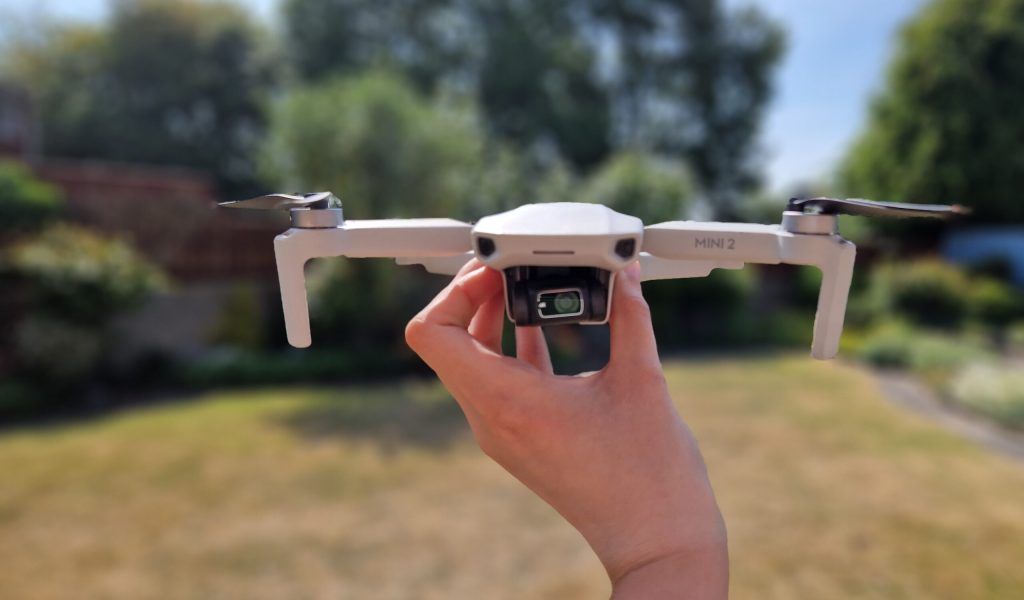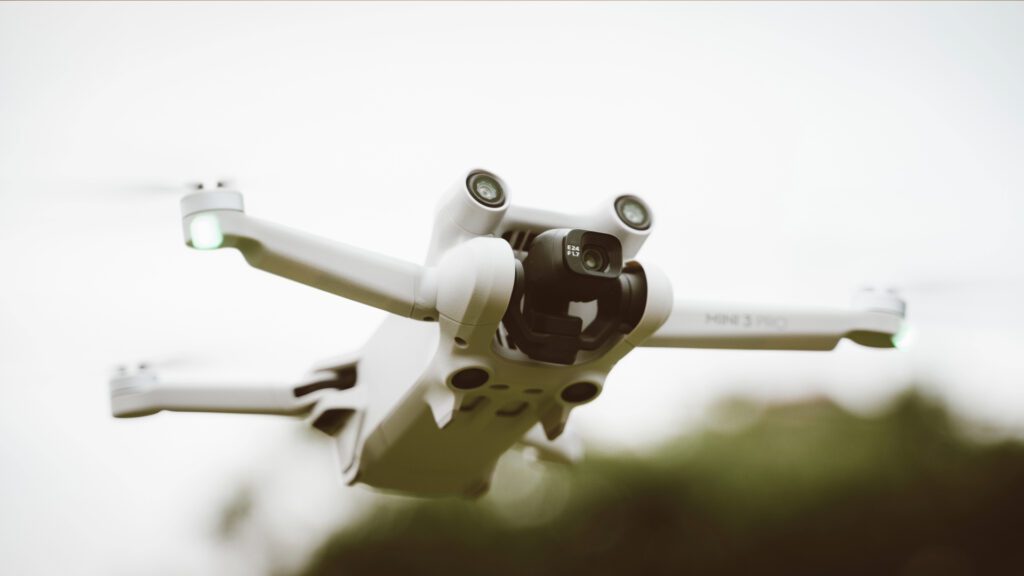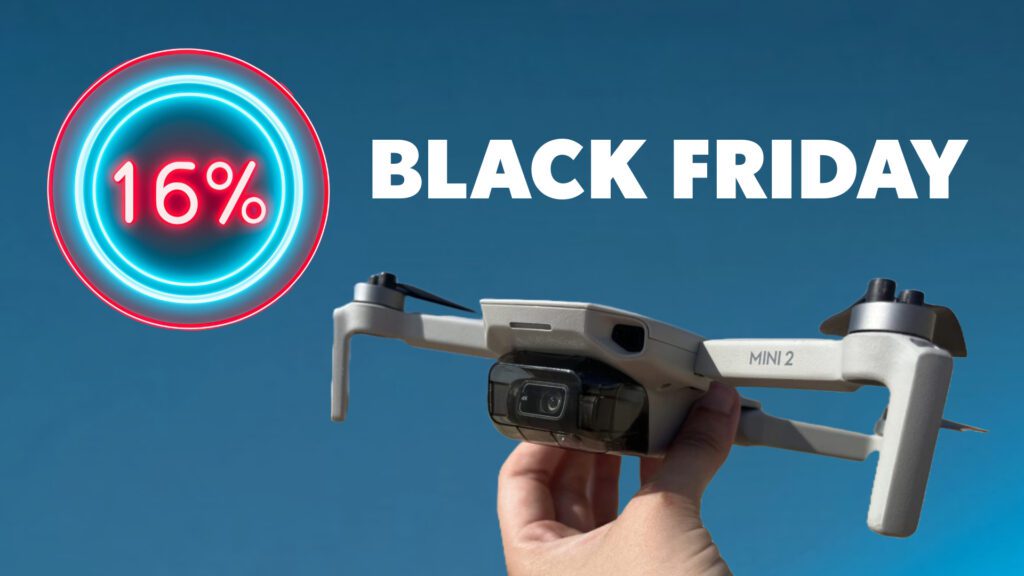With the increasing popularity of drones, mastering the art of flying has become more essential than ever. From understanding the basics to exploring advanced techniques, we’ve got you covered. So, fasten your seatbelt, power up your drone, and get ready to soar to new heights as we unlock the secrets to becoming a better drone pilot with these drone flying tips.
Start by using a drone simulator
Before taking your drone to the skies, consider using a drone flight simulator. This is a great way to get used to flying the drone and its controls without the risk of crashing or people interference.
A drone simulator is a software application that recreates the experience of flying a drone in a virtual environment, risk-free. This can help build confidence in piloting a drone and reduce the chance of accidents during actual flights.
If you purchase a decent drone simulator, it can replicate the same physics and behaviour of a real drone – and provide you with a transferable skillset for your physical drone. You can simulate different weather conditions, landscapes, and flight challenges, such as obstacle courses or flying through tight spaces. This helps you develop adaptability and problem-solving skills in a controlled virtual environment.
Simulators that allow for advanced manoeuvres allow you to explore and practice certain actions that may be difficult or risky to attempt in real life. You can experiment with intricate flight patterns, or complex camera movements, pushing the boundaries of your skills without the fear of crashing your drone.
By using a drone simulator, you can gain valuable flight experience, build muscle memory for control inputs, and develop a deeper understanding of drone flight dynamics.
Check out our guide on the best drone flying simulators in 2023.
Get used to controls by making a shape
Having a solid understanding of the basics is crucial when it comes to mastering any skill, and the same applies to drone flying. One effective way to strengthen your drone flying skills is by practising specific patterns or shapes by flying the drone.
For example, flying the drone in a rectangle shape engages both sticks, allowing you to grasp which controls correspond to specific movements within the drone’s motion.
To further refine your skills, try repeating the rectangular pattern while facing the drone in the opposite direction (have the gimbal and drone facing you). By doing so, you not only reverse the perspective but also reverse the controls. This practice will assist you in adapting to the drone’s movements when out flying and will vastly increase your skill in drone manoeuvrability.
Whether it’s flying in circles, squares, figure eights, or other geometric shapes, these practices can challenge you to maintain consistent speed, altitude, and positioning throughout the pattern. This improves your overall piloting skills and enhances your ability to execute precise manoeuvres.
Great creative with your footage
A great way to get better at flying your drone is by getting creative with the way you capture your footage.
Experiment with different camera angles, perspectives, and shot compositions. Use your drone as a tool for creative expression and explore unique ways to capture stunning aerial footage. This not only enhances your piloting skills but also develops your artistic vision.
For example, if you find yourself capturing a lot of aerial shots, try experimenting with close-up shots. Or in the case of subjects such as houses and castles, try capturing angled shots instead of face-on shots, or vice versa. Blend aerial shots with ground-level footage to provide context and perspective. Transition seamlessly between high and low angles to create a visually engaging sequence. This technique can add depth and dimension to your videos, enhancing the overall storytelling experience.
So when it comes to post-production, you will have a blend of high and low shots, expressing different depths and perspectives. This will make your storytelling a lot more varied and interesting.
Remember, piloting a drone provides an experience that cannot be replicated on the ground level. This is the advantage you possess when you take your drone to the sky, so don’t be afraid to try out some new camera angles.
Another tip to improve your drone flying skills and the footage you gather is by adding post-processing enhancements. After capturing your footage, explore post-processing techniques to further enhance your creative vision.
You could also consider adding post-processing enhancements to your footage with the aid of Adobe Suite or other preferable programs. Adjusting colours, contrast, and saturation can create a specific mood or atmosphere in your image or footage. Experiment with different editing styles to bring out the best in your aerial footage.
Check out our tips and ideas for drone video shots.
Familiar yourself with the emergency buttons and actions
Accidents or unexpected situations can happen while flying a drone. You can instantly get better at flying your drone by knowing what to do during emergencies.
Prepare for emergencies by practising emergency procedures, such as returning to home (RTH) function, manual landing, or dealing with signal loss.
Controls such as abrupt emergency stops, or catching the drone mid-air if there is no safe landing zone. Knowing these techniques can help you adapt to unexpected circumstances and all-round make you a safer and better drone flyer.
On the Fly app for the DJI Mini 2, there are three options to choose from so that if your drone was to lose signal, you can choose for the drone to return to home, land or hover.
In my opinion, hovering is often the safest position to adopt in various situations. Regardless of the issue at hand, hovering allows you to maintain control and keep your drone in the sky, eliminating the risk of a potentially problematic landing or triggering the return-to-home function.
Having the ability to handle such situations effectively can help prevent any potential damage or loss of your drone. Moreover, it contributes to your overall safety as a drone pilot, making you more skilled and responsible in the skies.
Fly in different flight modes
Flying in different flight modes is an excellent way to explore and expand your drone flying capabilities. Each flight mode available on your drone, such as sport mode, cinematic mode, or GPS-assisted mode, offers distinct characteristics and provides unique flying experiences. Becoming proficient in different modes will expand your flying capabilities.
The DJI Mini 2 comes offers Sport, Cinematic and Normal mode.
Sport mode
Sport mode is designed for speed and agility, allowing your drone to reach higher speeds and respond more quickly to control inputs. It’s ideal for capturing fast-moving subjects or dynamic action shots. Practising this in open areas away from trees and other objects, you can learn to master tight turns and rapid manoeuvres with precision.
Cinematic mode
Whereas, cinematic mode is tailored more for smooth and cinematic footage. It slows down the drone’s movements, resulting in more graceful and sweeping shots. This is usually best suited for capturing aerial footage, such as landscape and scenic panoramas. By flying in cinematic mode, you can refine your control finesse, focusing on achieving smooth and visually appealing shots.
Familiarising yourself with the features of each mode and how they best suit the footage you’re gathering will help you develop an eye for certain shots.
Normal mode
Sitting in between both sport and cinematic mode, this mode is for a regular, smooth flying speed.
Bonus tip: Practice droning someone as a subject
Before proceeding, it is important to emphasise that the individual you choose as a subject should be someone you know. To avoid concerns or questions, it is not advisable to practice these drone manoeuvres on a stranger.
A great way to get better at flying is to use someone as a subject to track and rotate around.
Capturing a person as a subject allows you to explore various flight dynamics and camera angles. You can practice flying at different altitudes, angles, and distances, experimenting with how these factors affect the composition and visual impact of your shots. This expands your understanding of how the drone’s movements influence the footage you capture.
Personally, I have found that my drone flying skills improve significantly when I practice on a moving subject. For instance, my friend is an avid outdoors girl, so I asked if I could practice getting some footage of her as she went paddleboarding. Particularly, the dronie and orbit functions were best to practice here as the subject is quite slow-moving, making it easier to keep the subject centred. Additionally, I practised recording my partner skating around a local park. With this activity being a little more fast-paced, I could practice tracking the subject, keeping within the centre of the gridlines, and following a straight path.
The automated flight controls that come with the DJI allow the drone to pull off certain movements such as tracking and orbital motions to create certain angles in your footage. But the best way to get better at flying your drone is to practice doing these manually. This can be difficult at first but like driving a car or a musical instrument, the muscle memory of controls will develop.
It’s important to understand what drone movements are suited to what it is that you’re filming. This is something you will grasp over time the more you go out and fly your drone around different subjects.
Considering flying your drone over water? Check out our guide on what you must know before flying your drone over water.
Practice
Finally, practice, practice, practice. Consistency and variation are key. The best way to truly get better at flying your drone – considering all the factors above of course – is to go out and regularly practice. And try out different movements, angles and subjects to adapt your skillset.
Remember, mastering drone piloting requires dedication, practice, and continuous learning. By understanding the fundamentals, exploring different flight modes, honing your manoeuvring techniques, and prioritising safety, you’ll become a safer and more skilled drone pilot. Embrace the opportunities offered by drone simulators, challenge yourself with creative flight patterns, and don’t hesitate to experiment with new techniques.
We hope these drone flying tips help, Happy flying!




